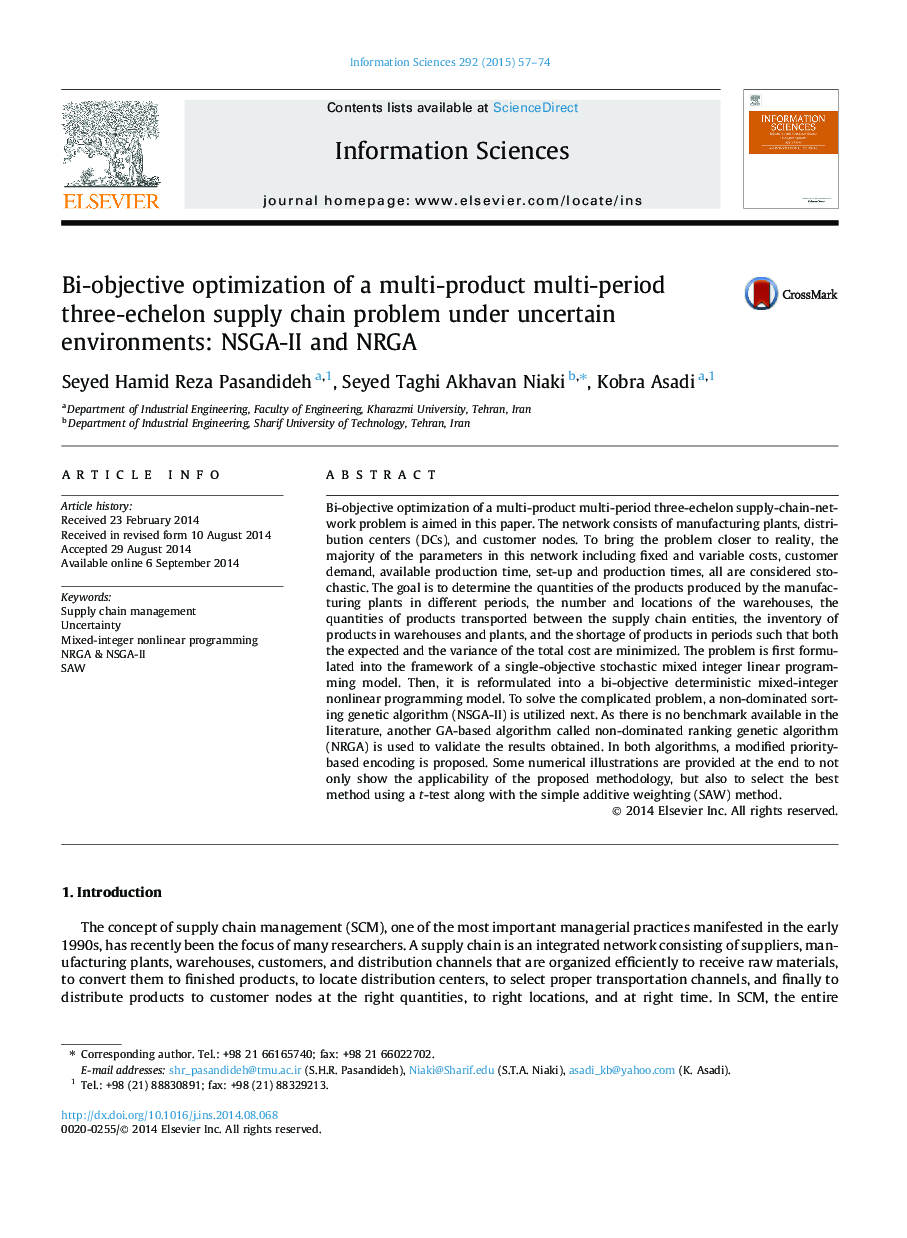| Article ID | Journal | Published Year | Pages | File Type |
|---|---|---|---|---|
| 393280 | Information Sciences | 2015 | 18 Pages |
•A bi-objective optimization of a MPMP three-echelon SCNP is aimed.•The majority of the parameters are considered stochastic.•The problem is formulated into a bi-objective deterministic MINLP model.•Parameter-tuned NSGA-II and NRGA with a modified priority-based encoding are proposed.•Numerical illustrations are provided to show the applicability.
Bi-objective optimization of a multi-product multi-period three-echelon supply-chain-network problem is aimed in this paper. The network consists of manufacturing plants, distribution centers (DCs), and customer nodes. To bring the problem closer to reality, the majority of the parameters in this network including fixed and variable costs, customer demand, available production time, set-up and production times, all are considered stochastic. The goal is to determine the quantities of the products produced by the manufacturing plants in different periods, the number and locations of the warehouses, the quantities of products transported between the supply chain entities, the inventory of products in warehouses and plants, and the shortage of products in periods such that both the expected and the variance of the total cost are minimized. The problem is first formulated into the framework of a single-objective stochastic mixed integer linear programming model. Then, it is reformulated into a bi-objective deterministic mixed-integer nonlinear programming model. To solve the complicated problem, a non-dominated sorting genetic algorithm (NSGA-II) is utilized next. As there is no benchmark available in the literature, another GA-based algorithm called non-dominated ranking genetic algorithm (NRGA) is used to validate the results obtained. In both algorithms, a modified priority-based encoding is proposed. Some numerical illustrations are provided at the end to not only show the applicability of the proposed methodology, but also to select the best method using a t-test along with the simple additive weighting (SAW) method.
